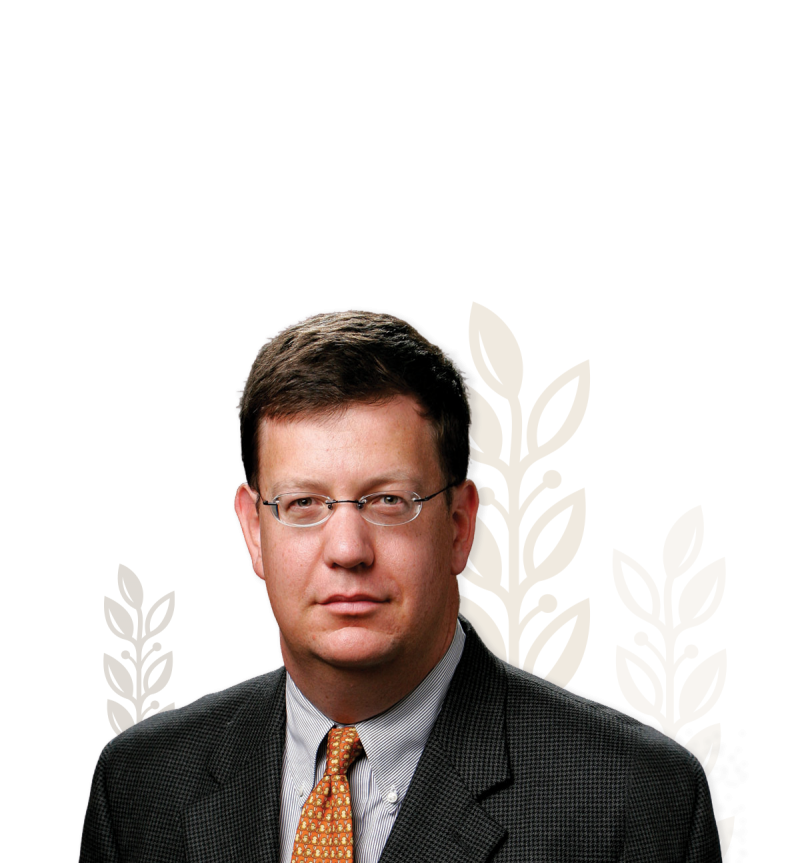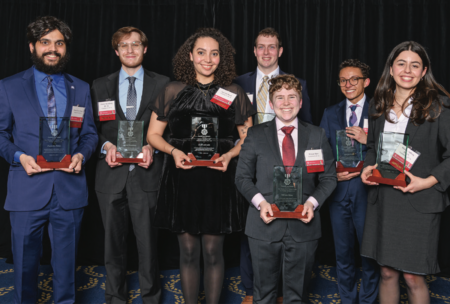by Brad Wendel

I was in the last year of my term as associate dean for academic affairs when news reports started trickling in of a new potentially dangerous and highly contagious respiratory virus. The dean at the time, Eduardo Peñalver, thought it might be prudent to have a meeting with all the Law School senior administrators who could have any role in a response to a pandemic. This was before “pandemic” was a word in common usage, before Tom Hanks tested positive for COVID-19, before the NBA abruptly stopped playing games, before most people not in the health professions owned a face mask, and before anyone had heard of Joe Exotic. I figured out immediately that the best thing for me to do would be to get out of the way and let some very talented professionals take care of things within their areas of competence. Our facilities, library, information technology, audiovisual support, and student support departments were already thinking about how they could respond if the unthinkable happened—which of course it did.
By mid-March 2020, Law School classes had gone fully remote. A heroic effort by our IT support staff resulted in a substantial number of not particularly tech-savvy faculty members figuring out the quirks of webcams, home internet access, and the ubiquitous Zoom platform. More important, however, faculty had to rethink law teaching from the ground up, and do so in a matter of weeks. The traditional law school Socratic classroom experience is difficult to replicate online. Experienced teachers read the room to see whether students are following the discussion or getting confused. Tone and body language help soften what could otherwise come off as an intense grilling process. Eye contact with other students keeps them involved while someone else is on the hot seat. All of this is lost in the Zoom environment, with its Brady Bunch grid of faces, raising of little blue hands, reminders that “you’re on mute,” connectivity issues, and awkward pauses to avoid talking over each other. Techniques like polling and breakout rooms helped to some extent, but going online still represented a fundamentally new approach to teaching. The challenges were, if anything, even greater for clinicians and teachers in the Lawyering program, whose teaching methods depend on individualized, face-to-face interactions with students.

We improvised our way through the spring, and that semester’s course evaluations reflected the students’ sense that we were doing the best we could under difficult circumstances. As the summer progressed and it was clear we would not be back to in-person teaching in the fall, however, the faculty and administration began to think about how to do remote instruction more effectively. While most classroom teachers had been doing the same thing we’ve been doing for years, others in the university and elsewhere had been systematically studying online learning. The most important finding is that effective online teaching does not simply try to replicate an in-person class. Straight lecturing isn’t a particularly good way to facilitate learning even in a live classroom, but it is deadly on Zoom. Even the most well-intentioned students have a hard time staying focused on a talking head on a screen. The technical aspects of distance learning create additional challenges, some of which raise important equity concerns. Although the Law School made computers and other hardware available to students who could not afford it, there is still the issue of students’ in-home environment. Not all of our students can go back to a house with a private room, reliable home WiFi, and fast internet connections. Our students are also scattered all over the globe, so an online course needs to be just as accessible in Seoul as in New York City.

Taking these considerations into account, I opted to try something very different for my large Professional Responsibility course. The Law School has partnered with eCornell, the university’s distance learning unit, to develop a Master’s degree program in legal studies, aimed at midcareer professionals in the technology and health-care sectors. I am building a course in Business Ethics for the Master’s program, and had been working with instructional designers at eCornell to optimize the class for the online environment. The guiding principles of the eCornell designers are short video segments, a very high degree of interactivity, and frequent feedback. The idea is not to merely impart a lot of information, but to get the students involved in doing something.

Much of August was taken up with recording videos and designing interactive exercises. In-house tech support, otherwise known as my twenty-year-old son, helped me configure video-recording software, buy a decent webcam, and connect to a tablet so I could doodle on my PowerPoint slides while talking. The result was far from eCornell quality, but not bad for something cooked up in my home office. The videos were uploaded to the course website, where the students could watch them whenever they had time and a bit of peace and quiet. If the connection was glitchy, no problem—try again later. I transformed many years of exam questions and in-class examples into interactive questions for the students to complete as part of each week’s assignment. The questions were loaded into the system along with pre-written feedback, so that an incorrect answer on a quiz would result in an explanation. For example, if a student chose an option, “No, the communication with the client was not protected by the attorney-client privilege because it was not made in anticipation of litigation,” the course management software would automatically respond, “Incorrect—anticipation of litigation is an element of work-product protection, not the attorney-client privilege.” In this way, the quizzes could function as part of the learning process, pushing out additional information in an interactive format. I was available to provide guidance, through online discussion boards and regularly scheduled Zoom office hours.
During my time as associate dean I learned just how good many of my colleagues are at teaching large upperclass courses. Since even experienced teachers can find ways to improve, we may be able to take lessons from the adaptations we were forced to make during the pandemic.
– Brad wendel
Of course, the proof of the pudding is in the eating, and the question was whether the students would be able to handle complex issues of conflicts of interest, privilege and confidentiality, malpractice, litigation misconduct, and other staples of Professional Responsibility. I was pleasantly surprised to read the students’ answers on their midterm and final exams and discover that, if anything, they were better than those in the usual in-person course. It seems that the eCornell methodology is onto something—frequent interactive exercises can push the students deeper into the material, forcing them to really grapple with some of the hard questions in that moment, rather than pushing off the learning to some future exam-preparation session.
Much is lost in the online environment, as compared with an ideal Socratic discussion. There is no way to follow out a conversation to the end, drill down deeper into an issue that the class finds interesting, or adjust the coverage in the moment. But a high-quality discussion can be difficult to facilitate in a large survey class like Professional Responsibility. If you’re standing in the well at the bottom of a large lecture hall, looking up at a sea of 135 faces, you’re already kind of a talking head on a video screen. During my time as associate dean I learned just how good many of my colleagues are at teaching large upperclass courses. Since even experienced teachers can find ways to improve, we may be able to take lessons from the adaptations we were forced to make during the pandemic. I will be adding more interactive components, including frequent quizzes, and will try to break up the live class into shorter segments.
Some fear that the pandemic will hasten the transition to distance learning, but in legal education at least, that is unlikely. The ABA and New York Board of Law Examiners, who regulate our curriculum to a significant extent, waived many of the restrictions on distance learning during the pandemic. Once we receive the all-clear to resume in-person instruction, I would be surprised if the regulators renew those waivers. We all understand the value of in-person education, and we miss it, too. Being in the classroom is energizing, and it is much harder to get to know students online. No one wants to continue online or hybrid classes for a minute longer than public health considerations warrant. But many of us are taking stock of lessons learned as a result of adapting to the world of social distancing and online learning, and thinking about ways to incorporate those lessons into the traditional live classroom environment.




